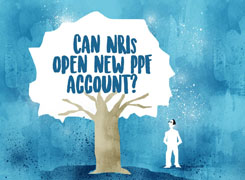Should a 79-Year-Old with Substantial Savings Close PPF and Reverse Mortgage?
Ramalingam Kalirajan |10876 Answers |Ask -Follow
Mutual Funds, Financial Planning Expert - Answered on Aug 08, 2024
He has an MBA in finance from the University of Madras and is a certified financial planner.
He is the director and chief financial planner at Holistic Investment, a Chennai-based firm that offers financial planning and wealth management advice.... more

Sir I am 79 years old. My PPF ACCOUNT is nearly 25 yrs. Old. I have nearly lakhs in mutual funds. Besides I have 50 lakhs in various fixed deposits. My house is worth 2corores. My Mrs is worth nearly fifty lakhs. We have gold and jewellery worth 15 lakhs. My monthly expenses are hardly ten thousand rupees . We stay with our daughter hence expenses are limited. My question to you 1) Should I close my PPF and invest in various instruments like bank FD sssaving scheme and mutual funds. 2) Isit advisable to reverse mortgage loan and invest wisely. Loan can be disbursed asOD and invest in various MF as Sip. We can pay the amount out of the profit Please advise in detail. YOUR'S SINCERELY VGN
Should You Close Your PPF Account?
Maturity and Tax Benefits: Your PPF account has matured since it’s 25 years old. You can extend it in blocks of five years. PPF provides tax-free returns, which is a significant advantage.
Liquidity Needs: If you need liquidity, withdrawing from PPF can be considered. However, the interest rate on PPF is generally higher than bank FDs. Keeping a portion of your investment in PPF can be beneficial for tax-free growth.
Diversification: While PPF is safe, diversifying into other instruments like bank FDs, saving schemes, and mutual funds can provide a balanced risk-return profile.
Reverse Mortgage Loan Consideration
What is a Reverse Mortgage?: A reverse mortgage allows you to borrow against the value of your house. You receive payments while living in the house, and the loan is repaid when you sell the house or pass away.
Benefits: This can provide a steady income stream without selling your house. Funds received can be used for living expenses or investments.
Investment Strategy: Using the loan amount for SIPs in mutual funds can generate potential returns. This can be a smart move if the returns from SIPs exceed the interest on the reverse mortgage.
Investment Strategy for Mutual Funds
Mutual Funds over FDs: Mutual funds, especially debt and balanced funds, offer potentially higher returns compared to bank FDs. They also provide better tax efficiency if held for the long term.
Systematic Investment Plan (SIP): Investing in mutual funds through SIPs can help in averaging out market volatility. Regular investments ensure disciplined investing and potential growth.
Assessment of Your Current Holdings
Fixed Deposits: You have Rs 50 lakhs in various FDs. While FDs are safe, the returns might not keep pace with inflation. Consider investing a portion in debt mutual funds for better post-tax returns.
Mutual Funds: Your mutual fund holdings are advantageous for growth and liquidity. Continue evaluating the performance and consider consulting a Certified Financial Planner for specific fund recommendations.
Gold and Jewellery: Your gold and jewellery worth Rs 15 lakhs serve as a good hedge against inflation. However, they should not form a significant part of your liquid assets.
Monthly Expenses and Cash Flow
Low Monthly Expenses: Your monthly expenses are Rs 10,000, which is quite manageable given your income sources. Staying with your daughter further reduces your financial burden.
Income Sources: Ensure your investments provide a steady income stream. Consider SWP (Systematic Withdrawal Plan) from mutual funds for regular income.
Detailed Investment Recommendations
Bank Fixed Deposits: Keep some portion in bank FDs for safety and guaranteed returns. Senior citizen schemes also offer higher interest rates.
Saving Schemes: Consider investing in senior citizen savings schemes for assured returns. These are specifically designed for senior citizens with attractive interest rates.
Mutual Funds: Diversify your mutual fund investments across different categories. Include a mix of equity, debt, and balanced funds. Actively managed funds can potentially offer better returns than index funds.
Regular vs Direct Funds: Investing through a Certified Financial Planner in regular funds can provide professional management and guidance. Direct funds may have lower expense ratios, but the expertise of a professional can help in optimizing returns.
Final Insights
Balanced Approach: Maintain a balance between safety and growth. Keep some funds in safe instruments like FDs and senior citizen schemes while investing in mutual funds for growth.
Professional Guidance: Consult a Certified Financial Planner to tailor your investment strategy to your specific needs and risk tolerance.
Health and Emergency Fund: Ensure you have adequate health insurance and an emergency fund for unforeseen expenses.
Review and Adjust: Regularly review your investment portfolio and make adjustments as needed based on market conditions and your financial goals.
Best Regards,
K. Ramalingam, MBA, CFP,
Chief Financial Planner,
www.holisticinvestment.in
You may like to see similar questions and answers below
Ramalingam Kalirajan |10876 Answers |Ask -Follow
Mutual Funds, Financial Planning Expert - Answered on Aug 16, 2024
Ramalingam Kalirajan |10876 Answers |Ask -Follow
Mutual Funds, Financial Planning Expert - Answered on Jun 10, 2025
Radheshyam Zanwar |6740 Answers |Ask -Follow
MHT-CET, IIT-JEE, NEET-UG Expert - Answered on Dec 09, 2025
Naveenn Kummar |234 Answers |Ask -Follow
Financial Planner, MF, Insurance Expert - Answered on Dec 09, 2025
Ramalingam Kalirajan |10876 Answers |Ask -Follow
Mutual Funds, Financial Planning Expert - Answered on Dec 09, 2025
Ramalingam Kalirajan |10876 Answers |Ask -Follow
Mutual Funds, Financial Planning Expert - Answered on Dec 09, 2025
Radheshyam Zanwar |6740 Answers |Ask -Follow
MHT-CET, IIT-JEE, NEET-UG Expert - Answered on Dec 09, 2025
Radheshyam Zanwar |6740 Answers |Ask -Follow
MHT-CET, IIT-JEE, NEET-UG Expert - Answered on Dec 09, 2025
Nayagam P P |10853 Answers |Ask -Follow
Career Counsellor - Answered on Dec 09, 2025
Mayank Chandel |2569 Answers |Ask -Follow
IIT-JEE, NEET-UG, SAT, CLAT, CA, CS Exam Expert - Answered on Dec 08, 2025
Mayank Chandel |2569 Answers |Ask -Follow
IIT-JEE, NEET-UG, SAT, CLAT, CA, CS Exam Expert - Answered on Dec 08, 2025

Mayank Chandel |2569 Answers |Ask -Follow
IIT-JEE, NEET-UG, SAT, CLAT, CA, CS Exam Expert - Answered on Dec 08, 2025





















